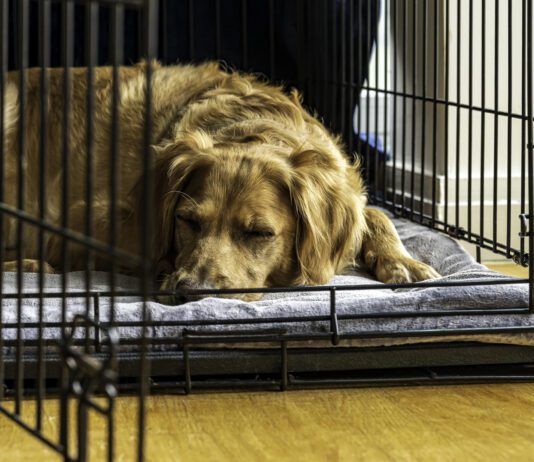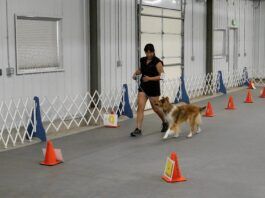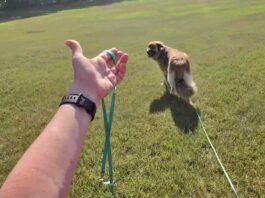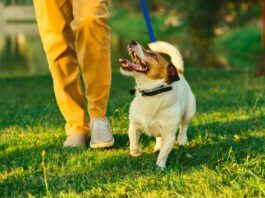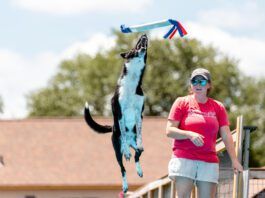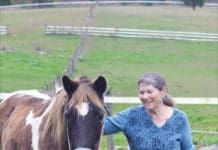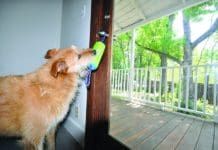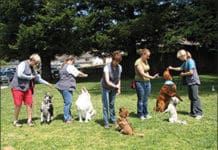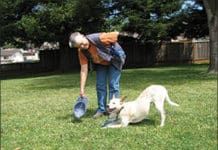Train Your Dog Using Imitation
I remember, years ago, confidently and assertively telling my training academy students "Dogs don't learn through imitation." But, degree by degree, I've been proven to be wrong.
Advantages to Daily Training
There’s a good chance you’ve heard the phrase, “Any time you are with your dog you are training.” It’s commonly spoken by dog trainers as a way of reminding clients that their dogs are constantly being reinforced for behaviors – by the owner, by others, and by the environment. Behaviors that are reinforced increase in frequency, durability and strength. It behooves you to pay attention to what’s happening in your dog’s world so you can make sure he doesn’t have the opportunity to be reinforced for behaviors you don’t want, and even more importantly, so you can make sure you reinforce behaviors that you like.
Peacekeeping Among Cats and Dogs
It's fairly common for dogs to be placed for adoption with a caveat that there should be no cats
How to Train Your Dog to Go to the Bathroom Outside
so getting him to touch the bells took just a matter of moments. However
Dog Games To Play if You Are Physically Impaired
How to exercise yourself at the same time you exercise your dog was the subject of Fitness Together" in the April 2013 issue of WDJ. But there are many reasons the human half of the equation may not be up for much physical exercise
5 Ways Teaching Your Dog to Do Tricks Can Improve Training
High-five. Fetch. Jump through a hoop. Spin, twirl, and take a bow. There is no doubt that tricks are fun to train, and even more fun to show off to friends and family. But they are so much more than just a good time! Here are five things tricks can do for you, your dog, and your training.
Looking for a Fun Trick to Teach to your Dog?
The trick Take a Bow!" is basically an exaggerated play bow
Diabetic Alert Dogs
Service dogs for people with diabetes are the “tattletales” of the dog world, according to Rita Martinez, co-author of a new book, Training Your Diabetic Alert Dog. The job for these special dogs is to notice a change in a person’s blood glucose level, and then tell that person about it. If that person doesn’t “listen” to the dog or isn’t able to respond, then a diabetic alert dog may tell someone else!
Book Review: Training Your Diabetic Alert Dog
Training Your Diabetic Alert Dog is a clear, easy-to-read resource for anyone training a dog to alert to changes in blood glucose levels. It offers some general information, such as what it is like to live with a service dog, advice on choosing the right dog, and how to find a qualified trainer. The majority of the book, however, gives step-by-step training protocols with just the right amount of information. It was hard to put the book down; I found it very compelling. I wanted to know: How do you train for alerts? How does a dog learn to recognize the scent? What does the dog need to learn to be able to do night alerts or car alerts?
The Dog’s Mind
Dr. Hare opened the Duke Canine Cognition Center (DCCC) in the fall of 2009. With his wife and co-author Vanessa Woods (a research scientist at DCCC, as well as an award-winning journalist and author of Bonobo Handshake), Hare wrote the book to provide a comprehensive review of what they’ve been studying at the DCCC – everything about dog cognition or, as they call it, “dognition.” Their goal was to bring historical and current information about canine cognition to the general public. In the not-too-distant past, if you heard the word “dog” and “mind” in the same sentence, someone was probably talking about obedience, as in: “My dog minds pretty well.” Or, “You’d better mind me, or else!” Today, if you hear those two words in relation to each other, you are at least as likely to be listening to someone talking about canine cognition – the fascinating possibility that dogs are far more able to process thoughts and grasp concepts than previously given credit for.
Sniff This; You’ll Feel Better
Shelter volunteer Katherine Kekel stood at the end of a long hallway and struggled to keep a grip on Tia, a pit bull-mix, as the dog strained at her harness. Unable to contain the dog any longer, Katherine let go. The well-muscled dog sprinted down the hallway, put on the brakes, and made a sharp right turn into a small room. The hunt was on! Tia was playing K9 Nose Work® at the Cherokee County Animal Shelter (CCAS) in Canton, Georgia. Her prey? A cotton swab scented with birch essential oil.
Fitness Together
I confess: I have a hard time fitting in enough exercise for myself and my dog. Nothing earth-shattering about this admission; I think not getting enough exercise is a universal condition. Even though my dog and I walk daily, life and age just keep creeping up, making it harder and harder for me to stay fit. And, my high-energy herding dog seems to always need just a little more in the way of activity than I have time and energy to provide.


